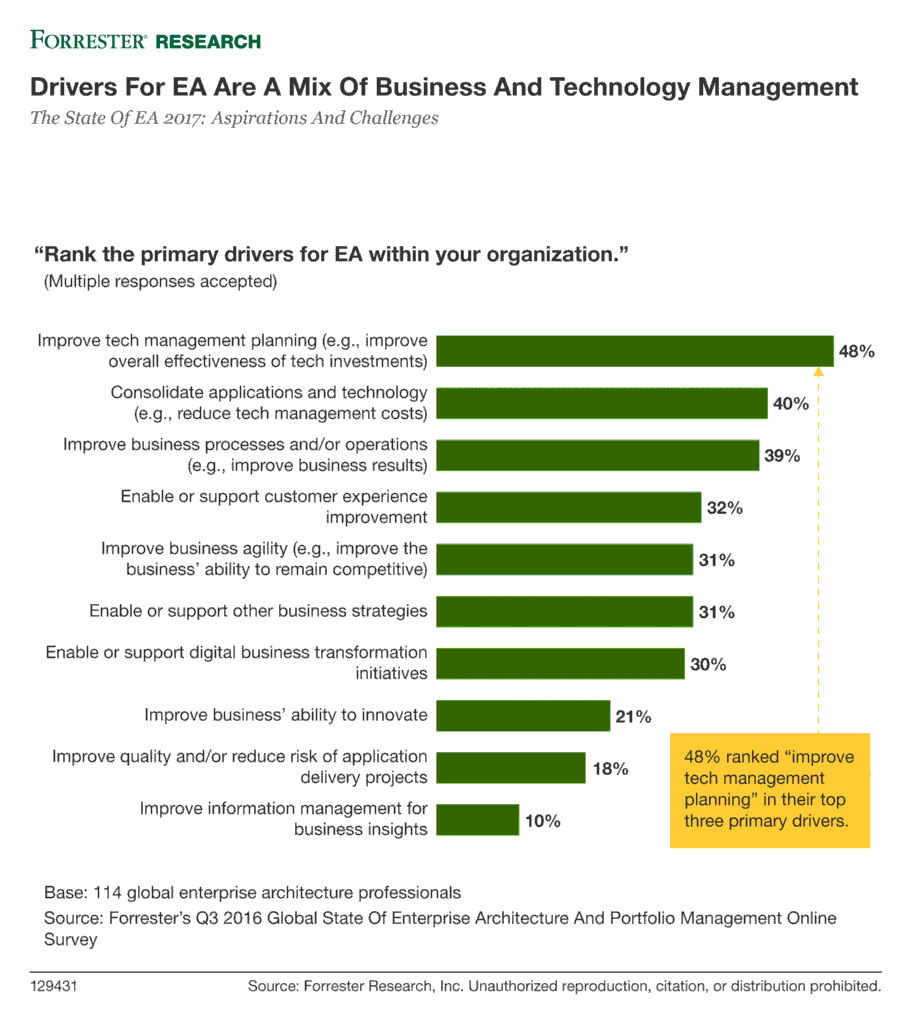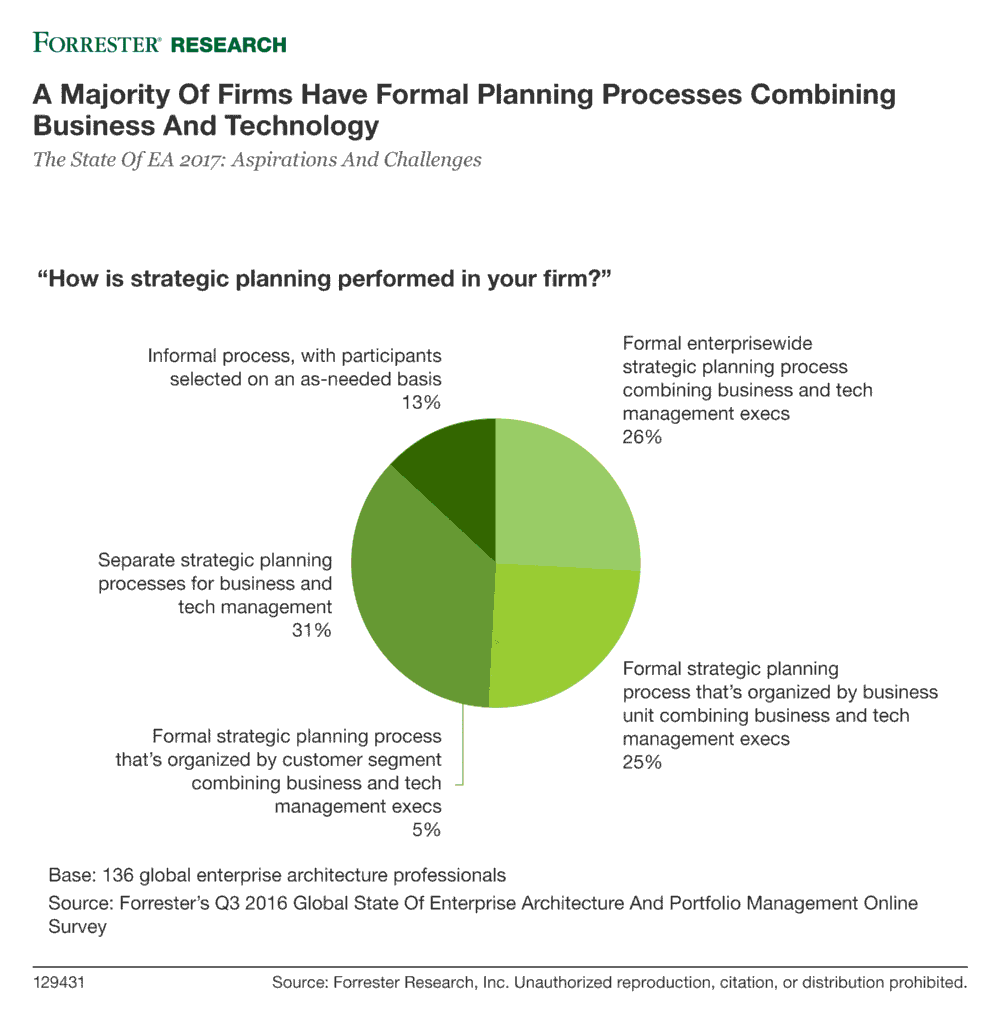
Given the pace of change in business today it should come as no surprise that Enterprise Architecture (EA) has begun to take center stage. Traditionally, EA has focused on architecting the technology landscape towards cost-efficiency. But according to their January 2017 report, The State of EA 2017: Aspirations and Challenges, which includes data taken from a survey of tech management executives and enterprise architects, Forrester “saw enterprise themes like customer centricity beginning to affect EA and show up as key drivers.”
The 2017 EA survey gives insights into what’s changing and what’s staying the same in the EA community, along with aspirations and challenges. For example, when asked to rank the primary drivers for EA within the organization, 48 percent of those surveyed ranked “improve tech management planning” in their top three primary drivers. Results included:
- 40 percent – consolidate applications and technology (reduce tech management costs)
- 39 percent – improve business processes and/or results
- 32 percent – enable or support customer experience improvement
Clearly, business concerns are growing in importance, reflecting a shift that tech-focused EA programs will need new competencies to address these concerns. The report finds that “planning processes are becoming more formal and inclusive.” In fact, Forrester reports that EA programs are more engaged and effective when their planning follows a formal process and when technology and business plan together. If EA leaders focus on strategic rather than project value, a formal process can then provide better input to EA direction setting and can open the door to earlier participation in planning. Forrester found that more than half of respondents have a formal planning process that combines business and technology:
- 26 percent – formal enterprise-wide strategic planning process combining business and tech management
- 25 percent – formal strategic planning process that’s organized by business unit combining business and tech management execs
Though these results are promising, Forrester also notes that “EA professionals still struggle to engage in planning processes and leverage weak governance processes to make architecture a reality.” They report that awareness and support outside of tech management is still lacking and metrics tend to be more tactical than strategic. While there is growth in business-impacting architecture, it is more likely to occur outside of EA.
Despite the shifting context and drivers for EA, Forrester’s data also shows little change from past years when it comes to the key aspects of structure, reporting, and competencies. The most common reporting relationship (49%) is still to the CIO. In addition, traditional roles remain a constant within EA as newer roles are still not common.
Clearly, EA programs will need to move beyond the comfortable confines of tech management. For starters, they must make communication and reporting a priority. Forrester suggests that EA leaders build teams from the ground up around business drivers. Instead of making the business come to them, EA professionals should be more proactive to communicate the business value of EA. By embedding expertise within the business, roles and competencies can be used to engage and influence a broader range of stakeholders.
There are a number of useful recommendations and tips for EA teams looking to elevate their practices. I invite you to download this in-depth survey, The State of EA 2017: Aspirations and Challenges.


![Establishing an Enterprise Architecture-to-Business Communication Framework [Infographic]](https://blog.planview.com/wp-content/uploads/2017/11/Establishing-an-Enterprise-Architecture-to-Business-Communication-Framework-Infographic_750x400.jpg)



